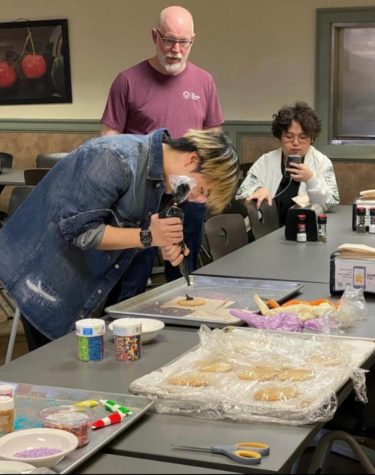Tech Improvements Benefit Online Learners
Spotty microphone technology can lead to some… misunderstandings. (Click cartoon to view larger!) Artwork by Clara LaChance
December 16, 2020
COVID-19 has shifted the MacDuffie School to a hybrid learning system, where some students study in-person while others study via zoom; new technology in the form of brand new microphones have been provided to teachers so that audio quality can be enhanced and students can hear better.
Several weeks ago, teachers were given brand new microphones; some teachers use the TONOR omnidirectional microphone, while others use a Bluetooth connected headset. An omnidirectional microphone means that audio is picked up from all directions, and according to the Amazon page, it can pick up audio with a radius of 11 and ½ feet. This enables teachers to move the microphone towards the center of the classroom, which not only allows students to hear other students, but they can listen without reducing the quality of the sound from the teacher. The bluetooth headset that some teachers use allows them to move all around the class room without compromising audio because the headset remains in the teacher’s ear.
There have been complaints regarding audio from online learners when MacDuffie initially started online learning this year; it would sometimes be difficult to hear other students during a group discussion, which could lead to other issues such as a lack of participation and engagement. Previously, teachers used the built-in microphone in their laptops, which is why the new microphones have better range and quality; there is more technology in an external mic.
Director of Information Technology Edward Gray went through a process of testing and assessment before reaching the current set up of microphones and audio equipment. During the summer, Gray experimented with a shotgun microphone, smartphones, and a tripod. He set these things up in a classroom and determined that it was not good enough for capturing audio during a class discussion.
Gray also tried a setup before the school started involving chromebooks and smartphones set up on tripod mounts to capture video and audio while the teachers move around the classroom.
“However, such a setup was not conducive to class discussions. We attempted to test the setup with teachers on campus before school started, but it was not the same as the actual classroom situations,” said Gray.
Arts Department Chair Becky Beth Benedict, English Teacher Carol Tomkiel, and History Teacher Joan O’Brien were all given different omnidirectional microphones to test out before the TONOR omnidirectional microphones were settled on.
“Ideally I would have liked to have been able to obtain some Owls, robotic conference cameras that have a 360 degree camera and multiple microphones, however they were in short supply and start at $800 a piece. Swivl is another device that would have been ideal for hybrid classrooms too, but they are even more expensive, ” said Gray.
While there are solutions like Owls and Swivl that can help enhance online learning, there have been improvements made to audio quality and equipment since MacDuffie started online learning thanks to Gray’s experimentation and purchase of new microphones.







